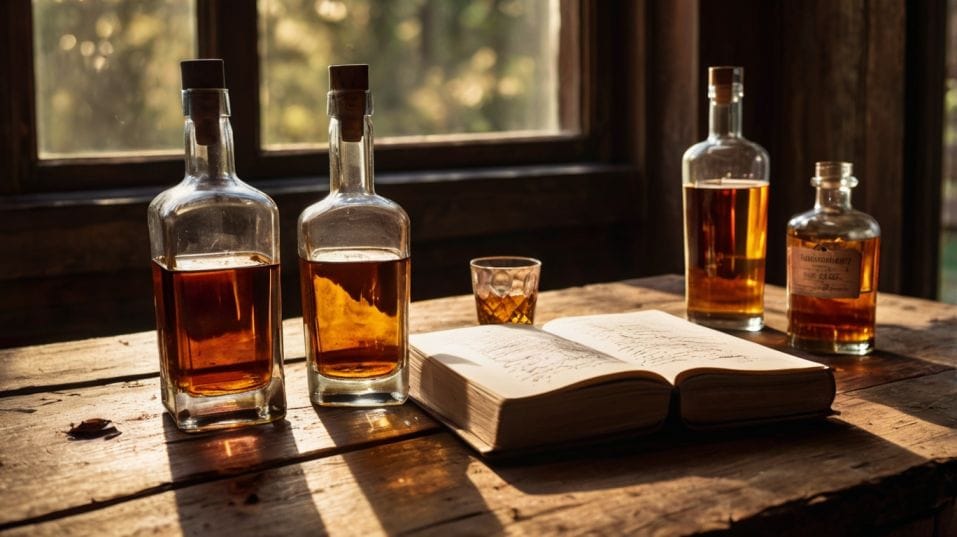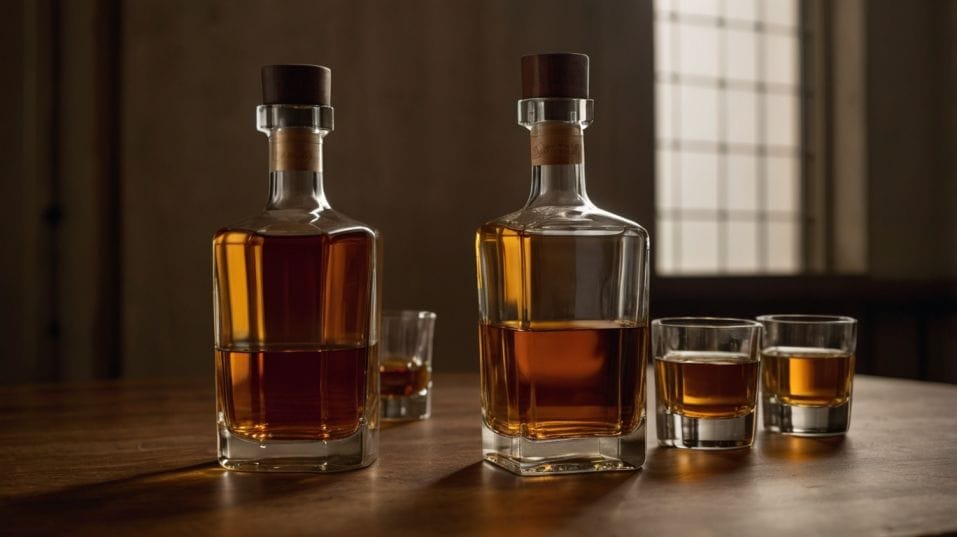The 3 Bottles Every Beginner Should Try First
These 3 beginner-friendly whiskey picks sharpen your palate, grow your confidence, and build your collection with clarity—not hype.

What if your next bottle could actually make you better at drinking whiskey—not just buzzed, but sharper, more confident, more curious?
If you’ve moved beyond grabbing the cheapest label and want to taste with purpose, you’re in the right place. These three bottles aren’t just enjoyable—they’re educational.
Each one is a stepping stone to a stronger palate, a deeper understanding, and a smarter whiskey journey. Let’s build your foundation the right way.
Start With Structure
Before you can identify great whiskey, you need to understand how it works. Structure is what separates a balanced whiskey from a flat one.
It’s the underlying architecture—the framework of grain, oak, and time working together to create something complete.
Learn to Taste the Blueprint
When you first pour a whiskey with solid structure, don’t rush the sip. Take in the aroma. Let the first taste sit on your tongue.
You should be able to break down the components: the sweetness from the grain, the spice or bitterness from the barrel, the length of the finish.
A well-structured whiskey feels cohesive—not too sharp up front, not too dry on the finish, not lost in a cloud of “smoothness.”

Think of it like tasting clarity. You want a whiskey that doesn’t blur the lines. When the oak hits, you should know it’s oak. When the grain speaks, it shouldn’t be drowned out by syrupy sweetness or artificial flavors.
The more clearly you can identify each piece of the puzzle, the more confident you’ll become in picking future bottles.
Choose Bottles That Push Back—Just Enough
Here’s the hard truth: many beginner-friendly bottles are engineered to be too soft. They go down easy, sure, but they don’t teach you anything.
They hide the very qualities you need to develop your palate—texture, balance, sharpness, and complexity.
You need something that challenges you a little. Not punishing or overly aggressive, but bold enough to make your mouth do some work.
Go for something bottled above the legal minimum proof. Avoid brands that lean on heavy flavoring, additives, or gimmicky finishes.
Look for whiskeys that show off the grain and barrel interaction honestly. These are the bottles that train your ability to evaluate structure—not just taste it.
Expand Through Contrast
Once you’ve developed a baseline understanding of how whiskey is built, you need to expand your range. That means finding bottles that contrast with what you already know.
Contrast is where your palate evolves. It introduces tension, surprise, and nuance. It forces you to think.
Develop Your Flavor Compass
Think of contrast as building your internal flavor map. If you’ve only ever had sweet bourbons, then a peppery rye or a coastal single malt will hit you like a revelation.
Suddenly, you’re picking up new aromas—clove, black tea, smoked meat, brine. The texture feels different. The finish lingers in a different place in your mouth. You’re not just drinking anymore—you’re decoding.
This is where you start to connect dots between style and origin. You’ll begin to recognize how climate influences aging. How mashbills affect spice.
How finishing casks shift sweetness or depth. It’s about expanding not just your taste but your understanding of what whiskey can be.
Choose Whiskeys That Break the Pattern
The best contrast bottle doesn’t just taste different—it makes you question what you thought you liked. It should disrupt your expectations. If you started with a soft, wheated bourbon, try something smoky or sherry-cask-finished next.
If your first bottle was a mild, fruity single malt, pour something briny or bold. The idea isn’t to find your “forever bottle” yet—it’s to explore enough territory that you start seeing the full landscape.
Contrast also teaches restraint. You’ll learn that “more flavor” isn’t always better. That peat doesn’t equal quality. That age doesn’t always mean complexity.
With every new contrast, your palate gains reference points. Your preferences become informed. And you start to develop taste that’s actually your own.
Anchor With Consistency
Now that you’ve tasted structure and explored contrast, it’s time to find a bottle that brings everything together consistently.
This is the bottle you’ll come back to over and over—not for excitement, but for stability. It’s your personal benchmark. Your palate’s home base.
Build Your Tasting Memory
A consistent bottle helps you track your growth. When you revisit it after tasting other styles, you’ll notice new things: how the grain pops, how the finish holds up, where it sits in the flavor spectrum.
It becomes your internal scale. Too sweet? Too dry? Too thin? You’ll start measuring every new pour against this one—not to limit yourself, but to sharpen your calibration.
This is the bottle you share with friends when introducing them to the basics. It’s the bottle you use to test your glassware, or to check whether your palate is fresh.
It’s the control sample in every blind flight. It doesn’t need to be expensive or rare. In fact, it shouldn’t be. It should be available, reliable, and made with the kind of straightforward quality that doesn’t try to impress—just delivers.
Let Simplicity Reveal the Truth
You’ll learn the most from bottles that don’t try to trick you. A consistent whiskey shows its cards. It doesn’t hide behind hype, secondary finishes, or collector hype.
It stands on the strength of its grain, its distillation, and its aging. And that kind of simplicity is harder to fake than you’d think.
When you have a go-to bottle that never lets you down, you also gain perspective. Not every whiskey has to be complex. Not every pour has to chase novelty. Sometimes, reliability is the clearest sign of real craft.
And when you know what good tastes like consistently, it becomes much easier to spot the difference between hype and substance in every bottle you try going forward.
Final Thoughts
You don’t need a hundred bottles. You need the right first three. One that shows you how whiskey is built. One that challenges your expectations.
One that keeps your palate honest. These are the foundations of real whiskey knowledge—not Instagram-ready shelves or blind buying based on ratings.
So forget the trends. Skip the trophies. Build a lineup with intent. Taste slow. Ask questions. Revisit often. Whiskey isn’t a status symbol—it’s a skill.
And you build that skill with structure, contrast, and consistency. Pour your next glass like it matters. Let it teach you something. Start building your palate—not tomorrow, not someday—tonight.




